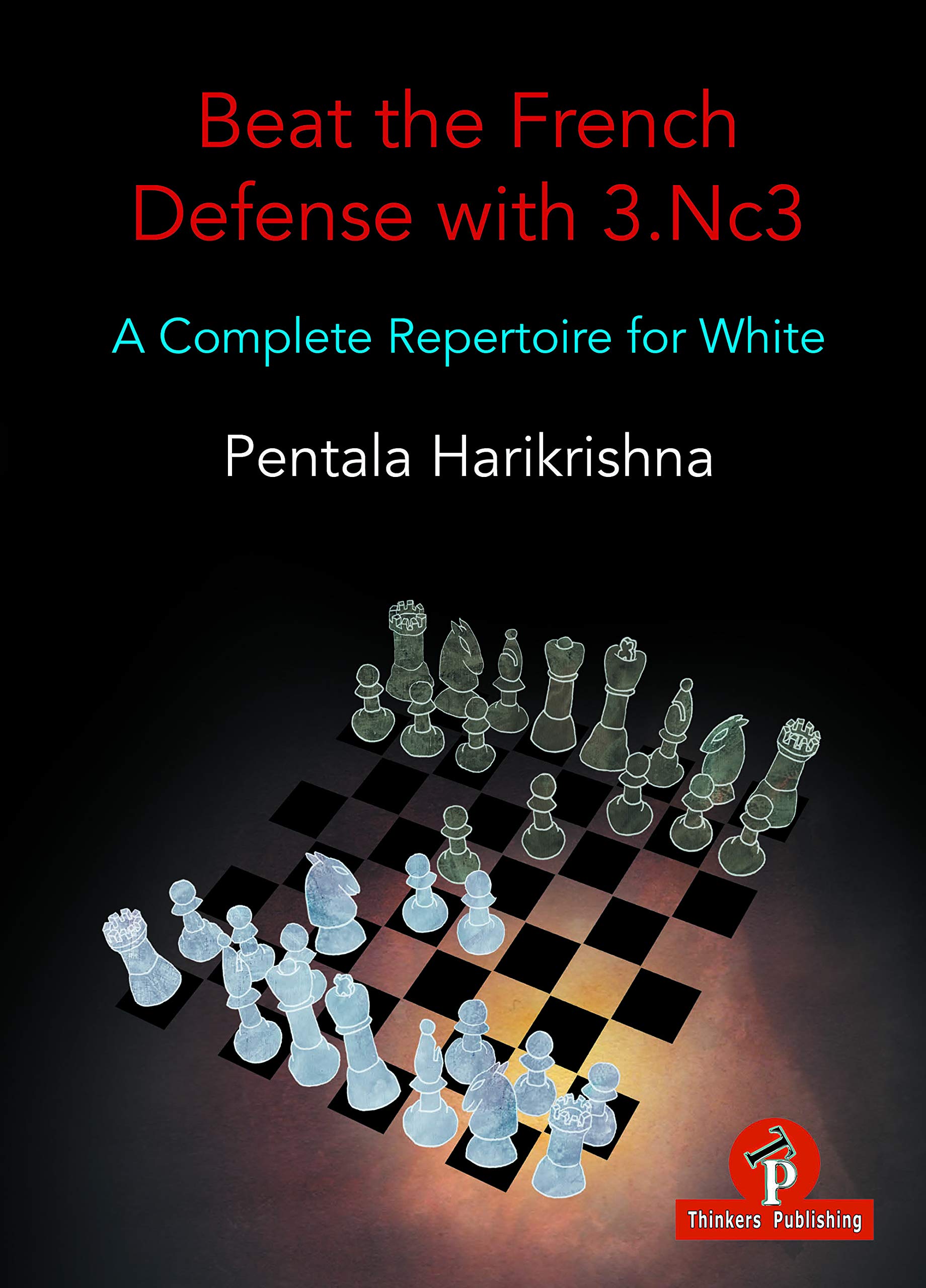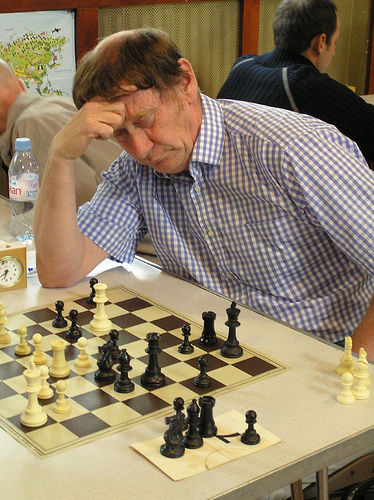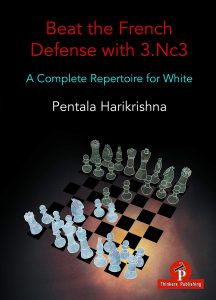
“GM Pentala Harikrishna is an established elite player who has been in India’s Olympiad team for over two decades. Since November 2016 Harikrishna has often entered the top 10 of the world rankings, and has consistently stayed in the top 20.
His peak rating is 2770 and he is well known for his exceptional endgame skills as well as for the ability to convert positions with a slight or even no advantage. Harikrishna learned chess from his grandfather at the age of 4, and swiftly progressed up through age-group tournaments until he became a grandmaster at age 14.
He has been World Junior Champion (2004) and Asian Individual Champion (2011). As part of the Indian national team, he has won bronze medals at the World Team Chess Championship, gold and bronze at the Asian Games, and silver (twice) at the Asian Team Championship. He has also won many major open and invitational tournaments, including the Marx Gyorgy Memorial (2006), Tata Steel Group B (2012), Biel MTO (2013), Edmonton International (2015) and Poker Stars Isle of Man (2015).”

From the publisher we have this extensive blurb:
“The French Defence was my main opening with Black while I was striving towards the GM title at the turn of the century. Quite often, I was able to use it to drag my opponent into a complicated maze of deep analysis, so I have intimate knowledge of the tricks used on the other side of the ‘barricades’. This helped me craft a solid base for our present repertoire, and many of the ideas presented in the book have brought me fine victories against some of the strongest French exponents as well.”
“At times, this means suggesting the 2nd or 3rd choice of the engine. He builds on the material from his earlier French course (Chessable, May 2019) and has expanded it with new analysis in all the lines, especially the 3…Nf6 4.e5 Nfd7 5.f4 variation. Harikrishna analyses both 5.Nce2 and 5.f4, so that the reader may make an informed choice about their personal preference. The driving force throughout is to keep the book clear-cut and practical. A good example of a practical weapon is the deceptively simple 3…Bb4 4.exd5 line. There are also fresh and interesting suggestions against the side lines you are likely to encounter, especially at shorter time controls. The entire Thinkers Publishing team joins with the author in wishing you enjoyment and success from this exceptional book”
End of blurb…
It is rare that one of the World’s top ten players would write a book on opening theory but here Hari, as he is commonly called, obliges. He has had a peak rating of 2770 and has been a member of India’s very strong Olympiad team for around two decades .
So, the starting position of this rather large (456 pages) tome is
and this book is written from the perspective of the first player striving to take on the French Defence with 3.Nc3. Of course it will also be of considerable interest to the second player.
Chapter 1 is entitled “Odds and Ends” in which Hari examines unusual Black 3rd moves .
He kicks off with 3…c5 which is a good move in a Tarrasch (3.Nd2) context but a clear mistake against 3.Nc3 as White trivially wins a pawn after White takes on d5 and c5 ending up with a 4 to 2 queen side majority and the d4 square in his control with the following position after 8.Ne4:
Next comes 3…a6 where both 4.Nf3 and 4.Bd3 are discussed . The most critical line here would appear to be 4.Nf3 Nf6; 5.e5 where in the main line Whites Q eventually comes to g4 putting black under pressure on the K side.
3…h6 is a curious third move alternative, but, as Hari points out it stops Black from getting in the Nimzowitschian style …f6 break as now g6 is horribly weakened.
Finally, 3…Be7 is covered but after 4.e5 c5; 5 Qg4 then puts black under pressure.
Both Chapters 2 and 3 look at the black reply 3…Nc6 (a idea of Aron Nimzowitsch) which has always seemed an illogical move to me in the French by blocking …c5.
After 3…Nc6 Hari first looks at 4.Nf3 then in the Chapter 3 4.e5 when 4…f6 is given as the black’s main line usually followed by 5.Nf3 Bd7; 6.Bd3 fxe5; 7.dxe5 Nb4; 8.Ng5 turns out to be good for white according to the author:
In this line black can play 5…fxe5 immediately but after 6.dxe5 Nh6 7.Bg5! again leaves White with advantage.
Chapter 4 brings the reader to the Rubinstein Variation (also ECO code C10) where black plays 3…dxe4 when after 4.Nxe4 options such as 4…Nf6 4…Qd5 and 4…Bd7 attract attention.
According to the author none of these achieve equality but 4…Bd7 is given the most analysis since it is not easy to show an advantage for white. Furthermore, 5.Nf3 Bc6; 6.Bd3 alternatives such as 6…Be4; 6…Nf6 and 6…Nd7 are all interesting tries. White usually plays ideas including c3 and Ne5 to maintain an edge.
Chapter 5 continues to look at the Rubinstein when 4…Nd7 is considered to be the main line. Hari recommends an usual approach for white which we will not reveal here: buy the book!
Chapter 6 progresses to more classical territory with the hugely popular 3…Nf6 (ECO C11 – C14) when 4.e5 Nfd7 and now 5.Nce2 is analysed in considerable depth through to the end of chapter 9.
Club French players will be expecting (and hoping for no doubt) 5.f4 or 5.Nf3 and therefore 5.Nce2 could well throw them off their stride. 5.Nce2 scores well at the highest levels (56%) and is in the armoury of Carlsen, Grischuk, Anand and Nepomniachtchi and consequently deserves much respect.
In this line White intends the usual c3 following …c5 and often will relocate his N from e2 to f4.
Having said all of that 5.f4, which Hari starts to look at in Chapter 10, seems (to me at least) to be the “best” move. Clearly it is the most popular continuation.
The “main line” continues 5…c5; 6.Nf3 where 6…Be7; 7.Be3 b6; 8.Qd2 00; 9.Nd1 is given.
Although this line leads to a white advantage the more aggressive “Williamsesque” 9.h4 which features in some of the other lines should be considered by white players, especially those who love to attack.
Chapter 11 consider 6…Nc6; 7.Be3 Be7; 8.Qd2 is looked at and Black can play …a6 and …b5 here but Whites plan here is Be2 and 00 as Q side castling is somewhat playing into blacks hand.
Instead Black can try 8…00 instead when White is best capturing on c5.
The older line 5.f4 c5; 6.Nf3 Nc6; 7.Be3 Qb6 has always been regarded as slightly suspect and Hari takes a look at this in Chapter 14.
Usually White plays b4 and black sacrifices a piece and although it leads to exciting chess the verdict remains the same. A well prepared white player should be delighted to see this line. The key word in all of this is, of course, “well”
Better perhaps is 7…cxd4 and Chapter 15 examines this: probably much tougher for white to crack. After 8.Nxd4 Qb6 the author provides a large quantity of analysis in this poisoned pawn style line where White sacrifices a pawn with 9.Qd2 and black rightly accepts the challenge with 9…Qxb2.
Finally(!) Hari leads us to the Winawer Variation but here he shocks the white player with his suggestion. To find out what this is you will need to buy the book!
I generally play the Tarrasch but my next bunch of email and postal games will definitely feature 3.Nc3 ! I’m keen to try out the authors suggestions and so should you be!
Colin Lyne, Farnborough, Hampshire, 19th June, 2021

Book Details :
- Paperback : 456 pages
- Publisher: Thinkers Publishing; 1st edition (28 Jan. 2021)
- Language: English
- ISBN-10: 9492510979
- ISBN-13: 978-9492510976
- Product Dimensions: 16.51 x 2.54 x 22.86 cm
Official web site of Thinkers Publishing

